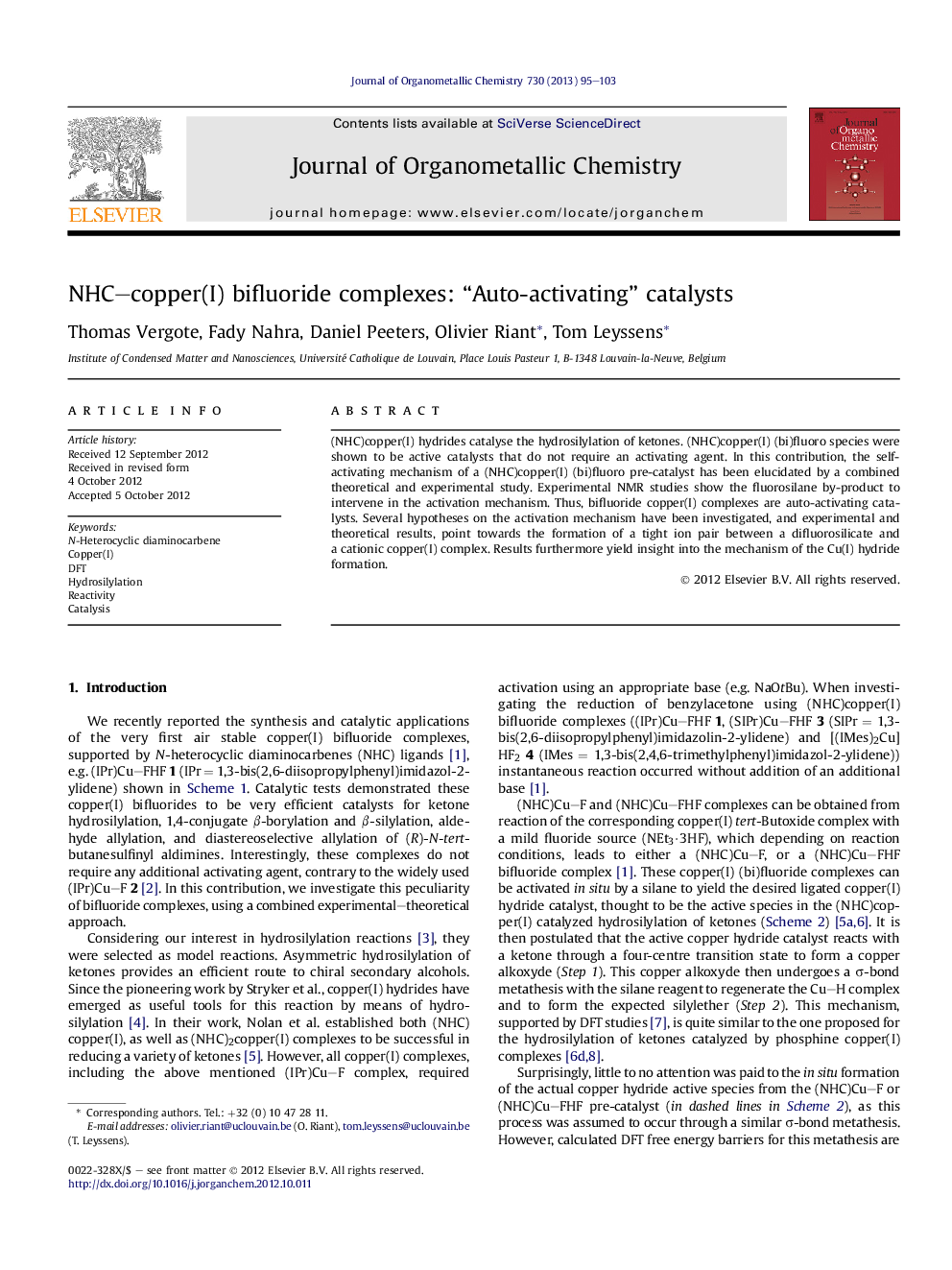| کد مقاله | کد نشریه | سال انتشار | مقاله انگلیسی | نسخه تمام متن |
|---|---|---|---|---|
| 1322825 | 1499908 | 2013 | 9 صفحه PDF | دانلود رایگان |

(NHC)copper(I) hydrides catalyse the hydrosilylation of ketones. (NHC)copper(I) (bi)fluoro species were shown to be active catalysts that do not require an activating agent. In this contribution, the self-activating mechanism of a (NHC)copper(I) (bi)fluoro pre-catalyst has been elucidated by a combined theoretical and experimental study. Experimental NMR studies show the fluorosilane by-product to intervene in the activation mechanism. Thus, bifluoride copper(I) complexes are auto-activating catalysts. Several hypotheses on the activation mechanism have been investigated, and experimental and theoretical results, point towards the formation of a tight ion pair between a difluorosilicate and a cationic copper(I) complex. Results furthermore yield insight into the mechanism of the Cu(I) hydride formation.
NHC–copper(I) (bi)fluoro species are shown to be auto-active catalysts, with the fluorosilane by-product shown to intervene in the activation mechanism. This self-activating mechanism of (NHC)copper(I) (bi)fluoro pre-catalysts has been elucidated by a combined theoretical and experimental study.Figure optionsDownload as PowerPoint slideHighlights
► Study on activation step of NHC–copper(I) bifluorides.
► Experimental and theoretical 1H and 19F NMR studies.
► NHC–Cu(I) bifluorides show auto-activating catalytic behaviour.
► Cationic copper(I) complex and difluorosilicate form tight ionic pair.
Journal: Journal of Organometallic Chemistry - Volume 730, 15 April 2013, Pages 95–103